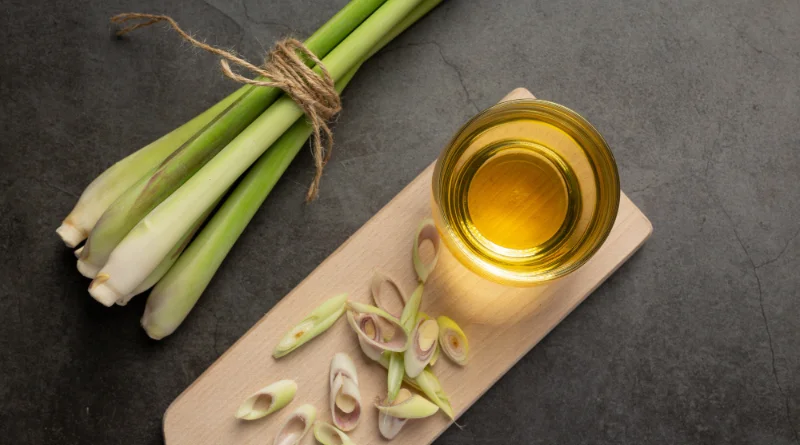How to Dilute Lemongrass Essential Oil for Safe Application
Lemongrass essential oil is celebrated for its refreshing citrus scent and versatile uses in aromatherapy, skincare, and household cleaning. Extracted from the Cymbopogon citratus plant, this oil boasts numerous therapeutic properties, including antibacterial, antifungal, and anti-inflammatory effects. However, due to its potency, proper dilution is essential to ensure safe and effective application. In this comprehensive guide, we’ll explore the benefits of lemongrass essential oil and provide step-by-step instructions on how to dilute it for various uses.
Understanding Lemongrass Essential Oil
Before delving into dilution methods, it’s crucial to understand the properties and benefits of lemongrass essential oil. Rich in citral, geraniol, and limonene, lemongrass oil offers a plethora of health and wellness benefits. It’s renowned for its ability to alleviate stress, boost mood, relieve muscle pain, and enhance skin health.
However, undiluted lemongrass oil can be irritating to the skin and may cause adverse reactions, especially for those with sensitive skin. Dilution not only mitigates the risk of skin irritation but also ensures that the oil is effectively dispersed and absorbed by the body.
Choosing a Carrier Oil
Carrier oils serve as a base for diluting essential oils, facilitating safe application and enhancing their therapeutic properties. When diluting lemongrass essential oil, it’s essential to select a suitable carrier oil. Popular carrier oils include:
Coconut Oil: Known for its moisturizing properties, coconut oil is an excellent choice for skincare formulations. It’s rich in fatty acids and has a light, non-greasy texture.
Sweet Almond Oil: With its mild scent and nourishing properties, sweet almond oil is ideal for sensitive skin. It absorbs quickly and leaves the skin feeling soft and hydrated.
Jojoba Oil: Similar in composition to the skin’s natural oils, jojoba oil is easily absorbed and suitable for all skin types. It’s particularly beneficial for balancing oily or acne-prone skin.
Olive Oil: A staple in many households, olive oil offers moisturizing and antioxidant benefits. It’s best suited for massage blends and hair treatments.
Grapeseed Oil: Lightweight and odorless, grapeseed oil is perfect for diluting essential oils without leaving a greasy residue. It’s rich in antioxidants and vitamins, making it ideal for skincare.
Determining Dilution Ratios
The appropriate dilution ratio depends on the intended use and the individual’s sensitivity to essential oils. As a general guideline, the following dilution ratios are recommended for safe application of lemongrass essential oil:
- For Facial Serums and Moisturizers: Use a dilution ratio of 0.5% to 1%. This equates to approximately 1 to 2 drops of lemongrass oil per ounce of carrier oil or lotion.
- For Body Massage and Bath Oils: Opt for a dilution ratio of 1% to 2.5%. This translates to 3 to 6 drops of lemongrass oil per ounce of carrier oil or bath gel.
- For Aromatherapy Blends: Dilute lemongrass oil at a ratio of 1% to 3%. Use 6 to 18 drops of lemongrass oil per ounce of carrier oil, water, or diffuser base.
- For Household Cleaners: Mix lemongrass oil at a dilution ratio of 2% to 5% with water or vinegar-based cleaning solutions.
It’s essential to perform a patch test before applying any diluted essential oil to the skin, especially if you have allergies or sensitivities.
Step-by-Step Dilution Process
Now that you’ve chosen a carrier oil and determined the appropriate dilution ratio, follow these steps to dilute lemongrass essential oil safely:
- Select a clean, dry container for mixing the oils. Glass dropper bottles or amber-colored glass jars are ideal for storing diluted blends and preserving their potency.
- Measure the desired amount of carrier oil using a small measuring cup or dropper. Pour it into the container, leaving some space at the top for adding the essential oil.
- Add the specified number of drops of lemongrass essential oil to the carrier oil. Use a dropper or pipette for precise measurement, ensuring accuracy and consistency.
- Secure the lid tightly and shake the container gently to mix the oils thoroughly. Allow the blend to sit for a few minutes to ensure proper emulsification.
- Label the container with the date of preparation and the ingredients used. This will help you keep track of your blends and ensure freshness.
- Store the diluted oil in a cool, dark place away from direct sunlight and heat. Proper storage helps extend the shelf life of the blend and maintains its efficacy.
Safety Precautions
While lemongrass essential oil offers numerous health benefits, it’s essential to use it responsibly and adhere to safety precautions:
- Avoid applying undiluted lemongrass oil directly to the skin, as it may cause irritation or sensitization. Always dilute it with a carrier oil before use.
- Perform a patch test before applying diluted lemongrass oil to a larger area of the skin. Apply a small amount of the blend to the inner forearm and wait for 24 hours to check for any adverse reactions.
- Keep essential oils out of reach of children and pets, as they can be toxic if ingested in large quantities.
- Consult a healthcare professional before using lemongrass essential oil if you’re pregnant, nursing, or have any underlying medical conditions.
Conclusion
Lemongrass essential oil is a versatile and potent natural remedy with a wide range of therapeutic benefits. By following proper dilution techniques and safety precautions, you can harness its power safely and effectively. Whether you’re using it for aromatherapy, skincare, or household cleaning, diluting lemongrass oil ensures optimal results while minimizing the risk of adverse reactions. Experiment with different carrier oils and dilution ratios to create personalized blends that cater to your specific needs. With care and caution, you can unlock the full potential of lemongrass essential oil and enhance your overall well-being.

